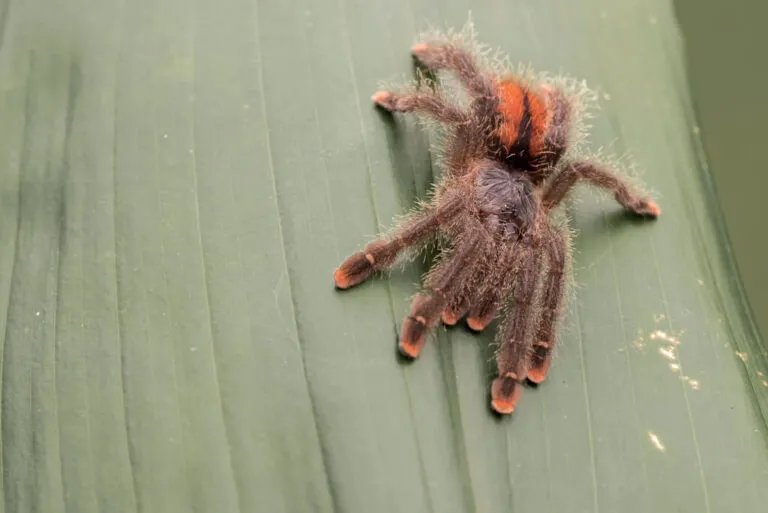What is a Pink Toe Tarantula?
The Pink Toe Tarantula, scientifically known as Avicularia avicularia, is a captivating arboreal tarantula species native to the rainforests of South America and the Caribbean. These spiders are popular in the pet trade due to their striking appearance and relatively docile temperament. They are named for the pinkish coloration on the tips of their toes, which contrasts beautifully with their dark bodies. Their arboreal lifestyle means they live primarily in trees, constructing silken nests for shelter. Understanding the Pink Toe Tarantula’s characteristics is crucial for providing appropriate care and understanding their lifespan.
Identifying the Pink Toe Tarantula
Identifying a Pink Toe Tarantula is relatively straightforward due to their distinctive features. Aside from the namesake pink toe tips, they typically have a dark body, ranging from black to dark gray, and can display iridescent hues, especially under certain lighting conditions. Their carapace, the hard upper shell, often has a metallic sheen. They possess characteristic urticating hairs on their abdomen, used as a defense mechanism, though they are generally less prone to flicking them than other tarantula species. The size varies, with females generally larger than males. Observing these traits helps confirm whether you’re looking at a Pink Toe Tarantula or another similar species.
Pink Toe Tarantula Lifespan Female vs Male
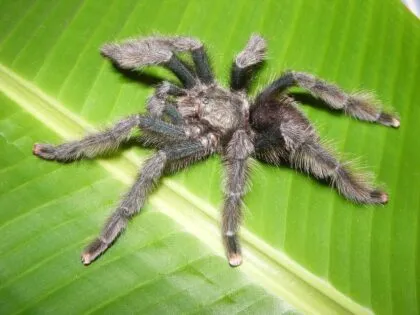
A significant factor influencing a Pink Toe Tarantula’s lifespan is its sex. Sexual dimorphism is a prevalent trait in the tarantula world, and this species is no exception. Males and females exhibit considerable differences in their life expectancies. Males generally have a shorter lifespan, maturing faster, and often dying shortly after reaching adulthood. Conversely, females tend to live much longer, providing a long-term commitment for owners. Understanding these lifespan differences is essential for planning your pet ownership and anticipating the care requirements over time. The difference is quite substantial, making sexing a key aspect of tarantula keeping.
Average Lifespan of Female Pink Toes
Female Pink Toe Tarantulas are renowned for their longevity, often living for a considerable duration compared to other tarantula species. On average, a well-cared-for female Pink Toe Tarantula can live for 10-15 years, and sometimes even longer. Factors like consistent care, a balanced diet, appropriate enclosure conditions, and minimal stress contribute to their extended lifespan. Their resilience and adaptability to captive environments make them appealing pets for those seeking a long-term companionship. Their long lifespan means owners can enjoy them for many years, watching them grow and develop.
Factors Influencing Lifespan
The lifespan of a Pink Toe Tarantula is influenced by several factors. Providing the ideal environment and care is crucial to ensure the tarantula lives a healthy life. These factors are crucial in maximizing their lifespan. Proper temperature, humidity, diet, enclosure size, and the absence of stress all play vital roles in the overall well-being of a Pink Toe Tarantula. Ignoring these factors can dramatically shorten their lifespan, potentially leading to premature death. Understanding and meticulously adhering to these guidelines can ensure your pet thrives.
Temperature and Humidity
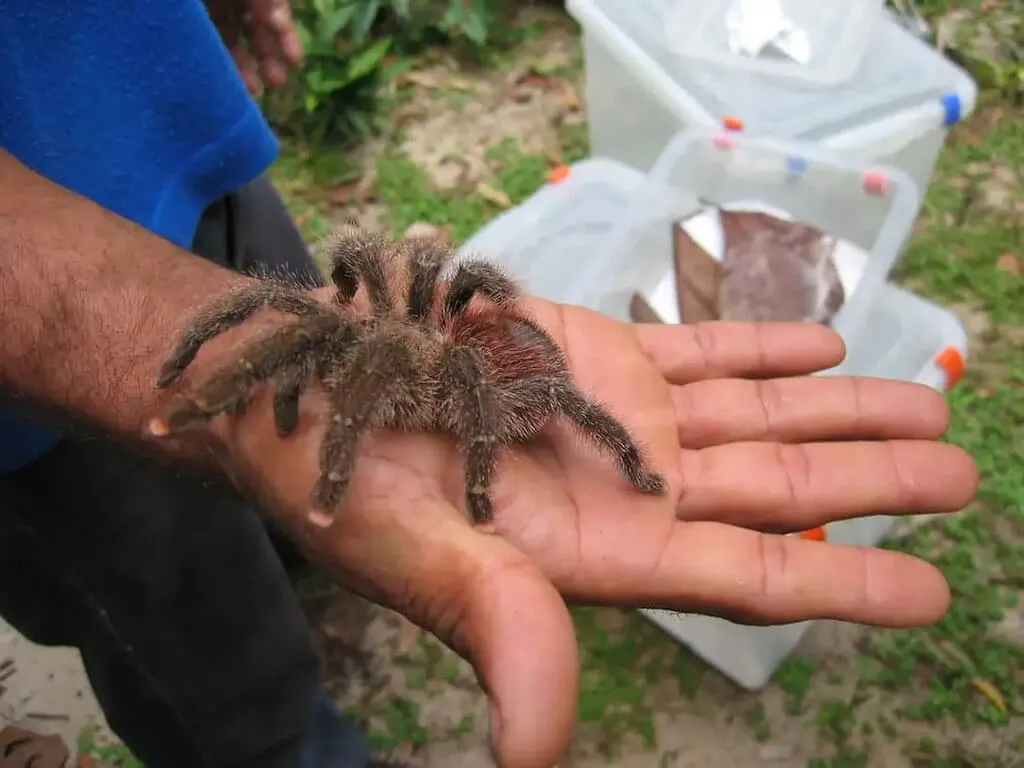
Maintaining the correct temperature and humidity levels within the enclosure is critical for the health and longevity of Pink Toe Tarantulas. These tarantulas thrive in a warm and humid environment, mirroring their natural habitat. A temperature range of 75-85°F (24-29°C) is generally ideal. Humidity should be maintained at 70-80%, which can be achieved by misting the enclosure regularly and providing a water dish. Using a hygrometer to monitor humidity levels is advisable. Improper temperature or humidity can lead to health issues, such as dehydration or respiratory problems, which can, in turn, reduce their lifespan.
Diet and Nutrition
A balanced diet is essential for the health and lifespan of a Pink Toe Tarantula. They are primarily insectivores, and their diet should consist of a variety of appropriately sized insects, such as crickets, roaches, and mealworms. It’s crucial to avoid feeding them insects caught outdoors, as they may carry pesticides or parasites. Feeding frequency should be adjusted according to the tarantula’s age and size, typically offering food once or twice a week for adults. Always provide a shallow water dish with fresh water. Overfeeding should be avoided, as it can cause health issues. A nutritious and varied diet contributes to overall health and longevity.
Enclosure Size and Design
The enclosure size and design play a significant role in the well-being of a Pink Toe Tarantula. These arboreal tarantulas require vertically oriented enclosures that provide ample space for climbing and webbing. The enclosure should be appropriately sized for the tarantula’s size. A small spiderling will not need a large enclosure. It is important to prevent the tarantula from falling and hurting itself. Providing appropriate substrate, such as coco fiber or peat moss, enhances the enclosure’s humidity. Decorate the enclosure with sturdy branches, cork bark, and artificial plants. Ensure the enclosure has adequate ventilation and a secure lid to prevent escapes. A well-designed enclosure provides a comfortable and secure habitat and is vital for the tarantula’s health and longevity.
Average Lifespan of Male Pink Toes
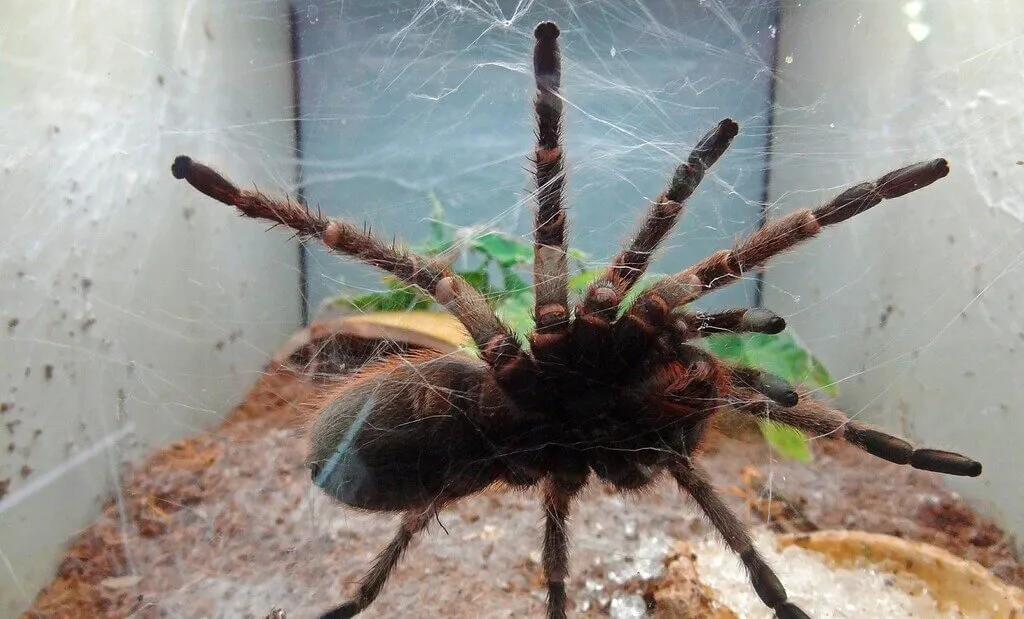
Male Pink Toe Tarantulas typically have a considerably shorter lifespan than females. After reaching maturity, males focus on reproduction and their lifespan decreases significantly. The average lifespan of a male Pink Toe Tarantula is around 1-2 years after reaching adulthood, sometimes even shorter. This is due to the stress of mating and the metabolic demands of searching for a mate. Understanding this difference in lifespan between the sexes is crucial when considering whether to acquire a male or a female tarantula as a pet. The significantly shorter lifespan of males makes them less suitable for those seeking a long-term companion, but they do have unique characteristics, such as often exhibiting vibrant colors and increased activity levels after maturity.
Challenges and Risks
Caring for Pink Toe Tarantulas comes with challenges and potential risks, particularly related to their health and well-being. Owners should be prepared to handle these potential problems. Common issues include improper molting, parasitic infections, and health problems that can occur in captivity. Regular observation of the tarantula’s behavior and appearance can help in detecting early signs of illness or distress. Seeking veterinary care from a reptile or exotic pet specialist is recommended when necessary. By understanding the challenges and taking preventive measures, owners can minimize risks and contribute to the tarantula’s longevity.
Moulting Process
The moulting process is a vulnerable time for Pink Toe Tarantulas. Moulting is the process of shedding their exoskeleton as they grow. During this period, tarantulas are susceptible to injury and stress. Owners should avoid handling the tarantula during moulting, as it can be very stressful. Provide a safe, undisturbed environment and maintain appropriate temperature and humidity levels to ensure successful moulting. Ensure the tarantula is able to flip onto its back to remove the old exoskeleton. Failure to moult successfully can lead to serious health problems and a shortened lifespan.
Common Health Issues
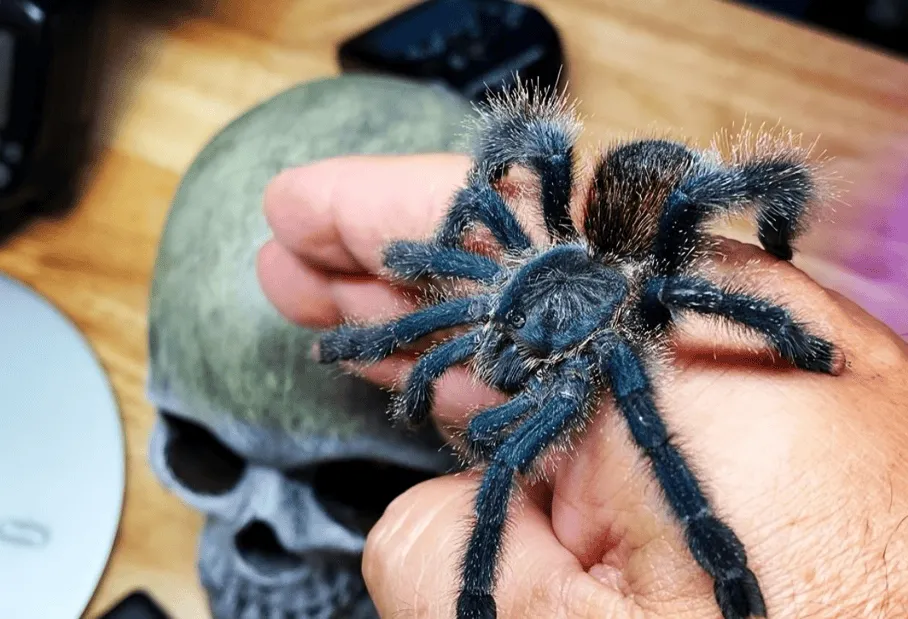
Pink Toe Tarantulas, like all living creatures, can be prone to certain health issues. Infections, parasites, and injuries are common causes. Preventative measures, such as maintaining a clean enclosure, providing a balanced diet, and ensuring proper temperature and humidity, can help prevent many health problems. Watch for signs of illness, such as loss of appetite, lethargy, and unusual behavior. Addressing these issues promptly is critical for the tarantula’s health. Seek expert advice if you’re concerned about the health of your pet. Knowing common health issues helps owners take action before they become serious problems.
Pink Toe Tarantula Lifespan Conclusion
The lifespan of a Pink Toe Tarantula is a fascinating aspect of their care and ownership. With a clear understanding of factors like sex, environment, diet, and potential health issues, owners can greatly influence their pet’s longevity. Females generally live for many years, while males have a shorter life expectancy. Responsible pet ownership involves providing optimal care, which includes maintaining ideal temperature and humidity, a balanced diet, and a secure enclosure. By prioritizing these aspects of care, you can enjoy many years of companionship with these beautiful creatures. Providing an enriching and healthy environment for your Pink Toe Tarantula not only enhances its quality of life but also extends its lifespan, allowing you to appreciate these amazing arachnids for as long as possible.
